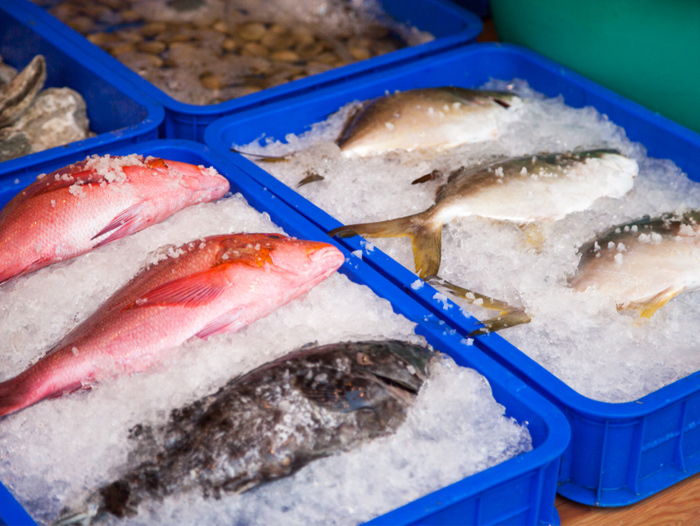NFI: The Facts About Seafood, COVID, and Chinese Food Markets
June 17, 2020 | 5 min to read

On 13 June, Chinese media began reporting on the closure of the Xinfadi food markets in Beijing due the presence of COVID-19.
Do not be misled by sensational reports. The facts are clear. And these are the facts about food according to academic experts and global public health officials and agencies:
Former Commissioner of US Food and Drug Administration states: “The idea it hitched a ride on fish is highly implausible. I mean it is absurd. I can’t see any plausible scenario where this virus rode in on a salmon.”
The World Health Organization states: “As food has not been implicated in the transmission of COVID-19, testing of food or food surfaces for this virus is not recommended.”
The Codex Alimentarius states: “COVID-19 is a respiratory illness primarily transmitted through person-to-person contact and direct contact with respiratory droplets generated when an infected person coughs or sneezes. There is no evidence to date of viruses that cause respiratory illnesses being transmitted via food or food packaging. Coronaviruses cannot multiply in food; they need an animal or human host to multiply. It is highly unlikely that people can contract COVID-19 from food or food packaging.”
The Food and Agriculture Organization of the United Nations states: “Despite the hypothesis that the virus may have originated in bats and infected another animal used for food, there is no evidence of continued transmission of the virus from animals to humans through the food chain.”
The US Food and Drug Administration states: “…. there is no evidence that food or food packaging have been associated with transmission (of COVID-19) and no reason to be concerned.”
The US Centers for Disease Control and Prevention states: “In general, because of poor survivability of these coronaviruses on surfaces, there is likely very low risk of spread from food products or packaging..”
Canadian Food Inspection Agency states: “Scientists and food safety authorities around the world are closely monitoring the spread of COVID-19. There are currently no reported cases of COVID-19 being spread through food.”
The Norwegian Food Safety Agency states: “There are no known cases of infection via contaminated food, imported food or water. Therefore, fish and seafood products from Norway are safe to eat” and “Currently there are no known cases of infection via contaminated food, imported food or water. Based on current knowledge of coronaviruses, infection via food and water is considered unlikely.”
The European Food Safety Authority states: “Experiences from previous outbreaks of related coronaviruses, such as severe acute respiratory syndrome coronavirus (SARS-CoV) and Middle East respiratory syndrome coronavirus (MERS-CoV), show that transmission through food consumption did not occur. At the moment, there is no evidence to suggest that coronavirus is any different in this respect.”
The German Federal Institute for Risk Assessment states: “There are currently no cases which have shown evidence of humans being infected with the new type of coronavirus via the consumption of contaminated food. There is also currently no reliable evidence of transmission of the virus via contact with contaminated objects or contaminated surfaces, which would have led to subsequent human infections.”
The Chilean National Fisheries and Aquaculture Service states: “There is no evidence to suggest that SARS-CoV-2 can infect aquatic animals and, therefore, these animals do not play an epidemiological role in spreading COVID-19 to humans.”
University College London researchers state: “SARS-CoV-2 can infect a broad range of mammals, but few fish, birds or reptiles” and that “most [fish] have no susceptibility to infection.”
Asian Fisheries Science journal states: “Currently, there is no evidence to suggest that SARS-CoV-2 can infect aquatic food animals (e.g. finfish, crustaceans, molluscs, amphibians) and therefore these animals do not play an epidemiological role in spreading COVID-19 to humans.” (authors include 16 global public health researchers)
North Carolina State University researcher states: “In fact, we don’t see evidence of any respiratory viruses being transmitted through food in the past.” (COVID-19 is a respiratory virus) and “‘The good news with this particular virus is that it is not a foodborne virus. Most of the food that we eat, ends up getting right into our gut and ends up encountering a whole bunch of acid in our stomachs. And this virus particularly doesn’t really remain infectious once it hits the stomach.”
For more information about what global public health professionals say about seafood and COVID, visit COVID-19 & Seafood website.
